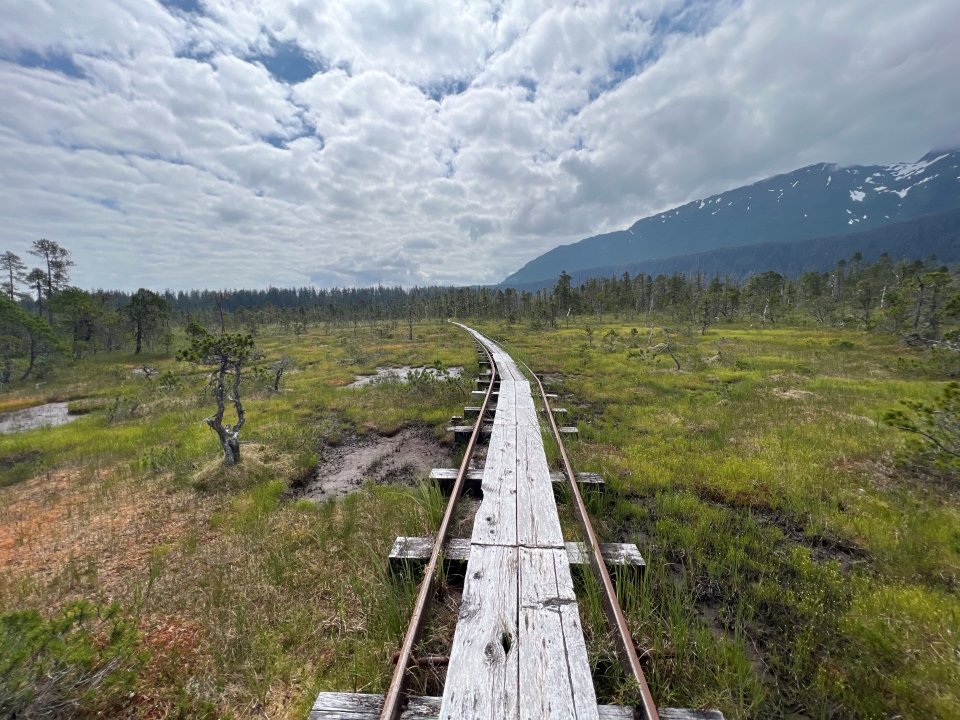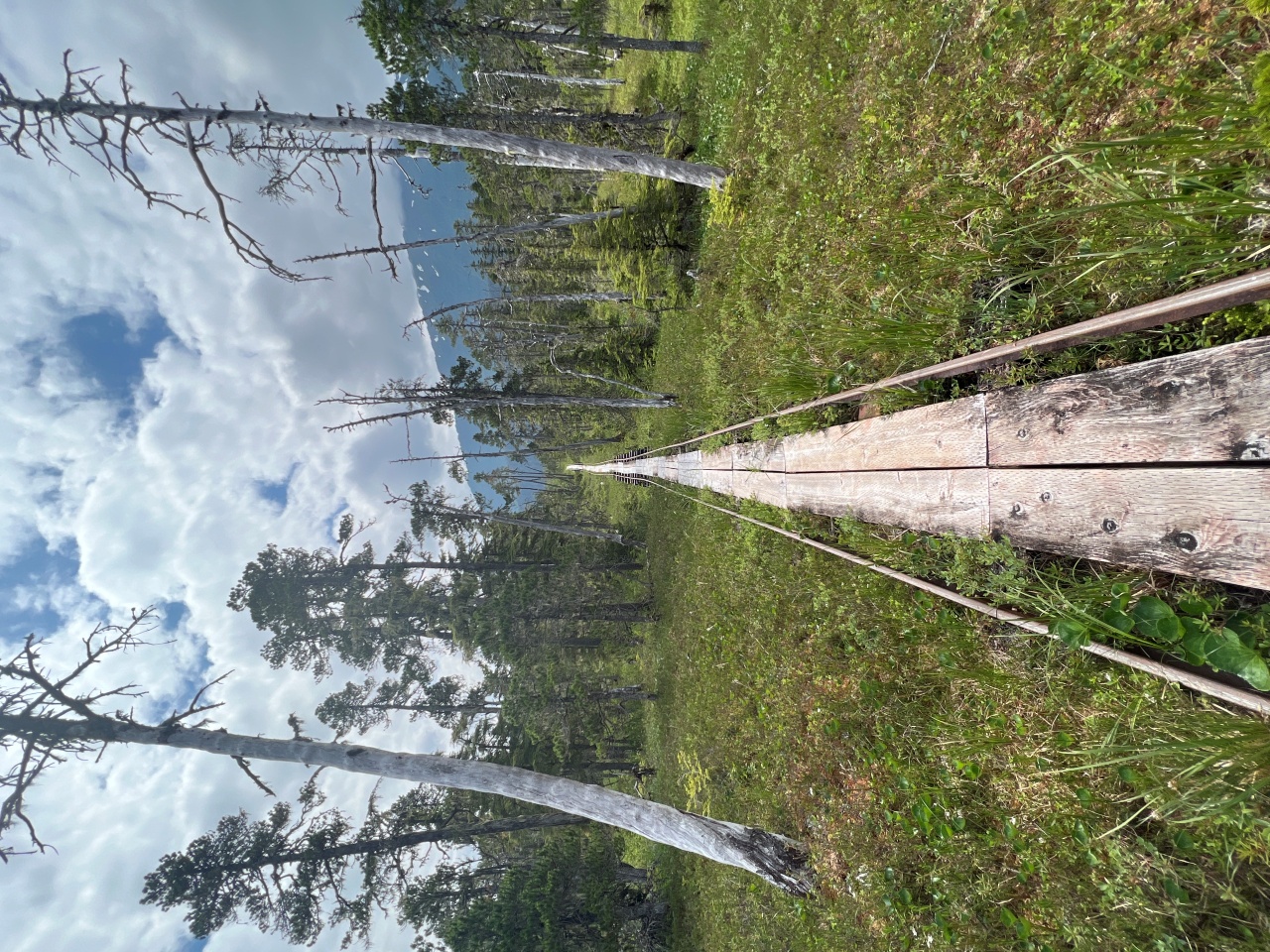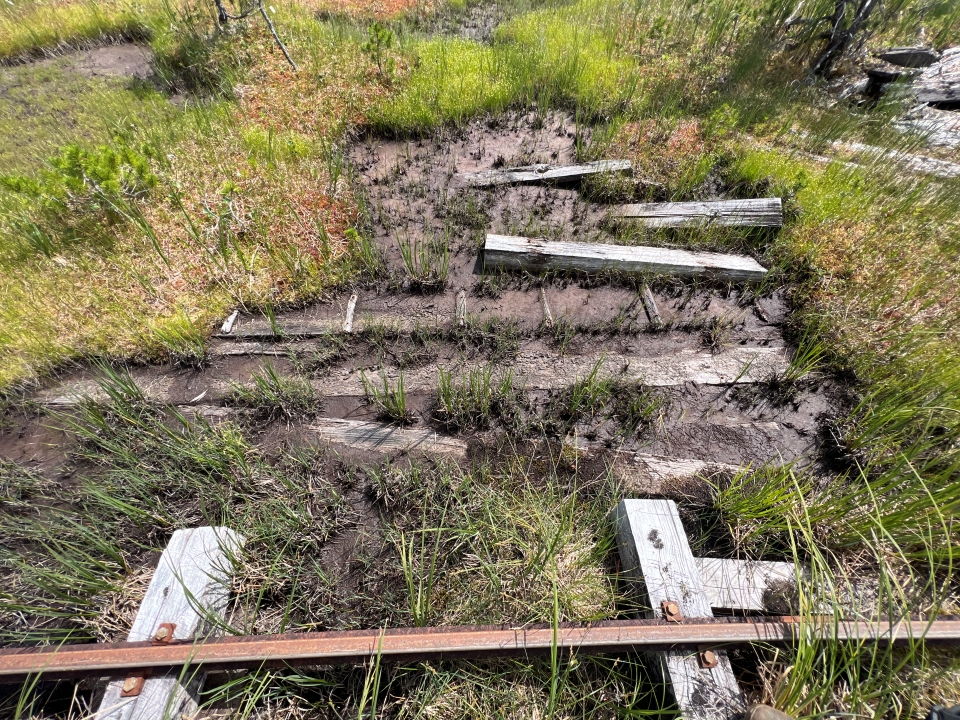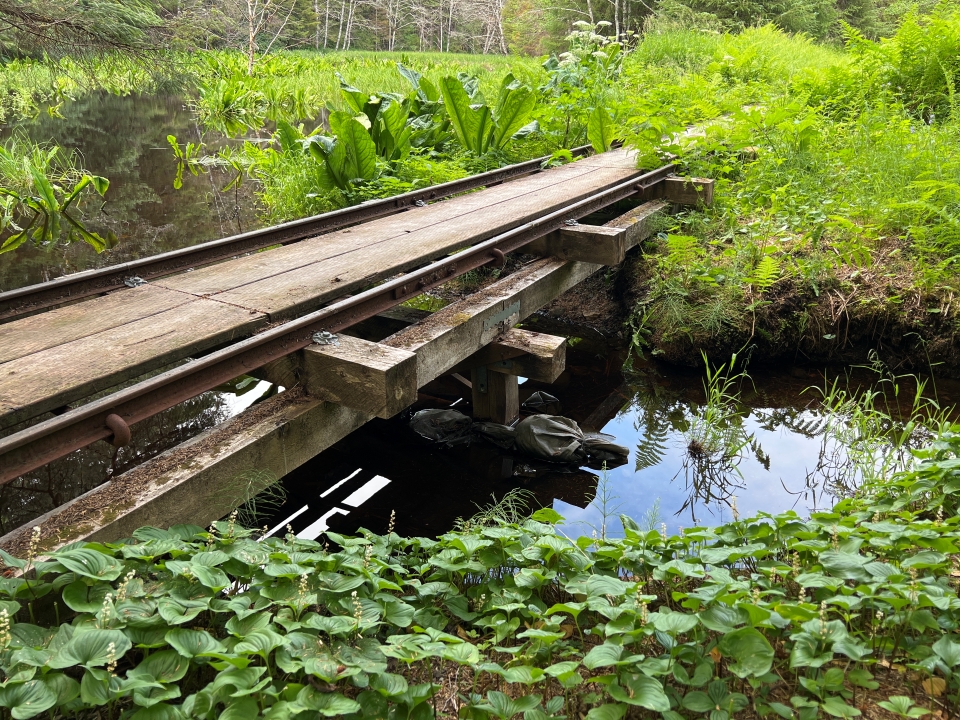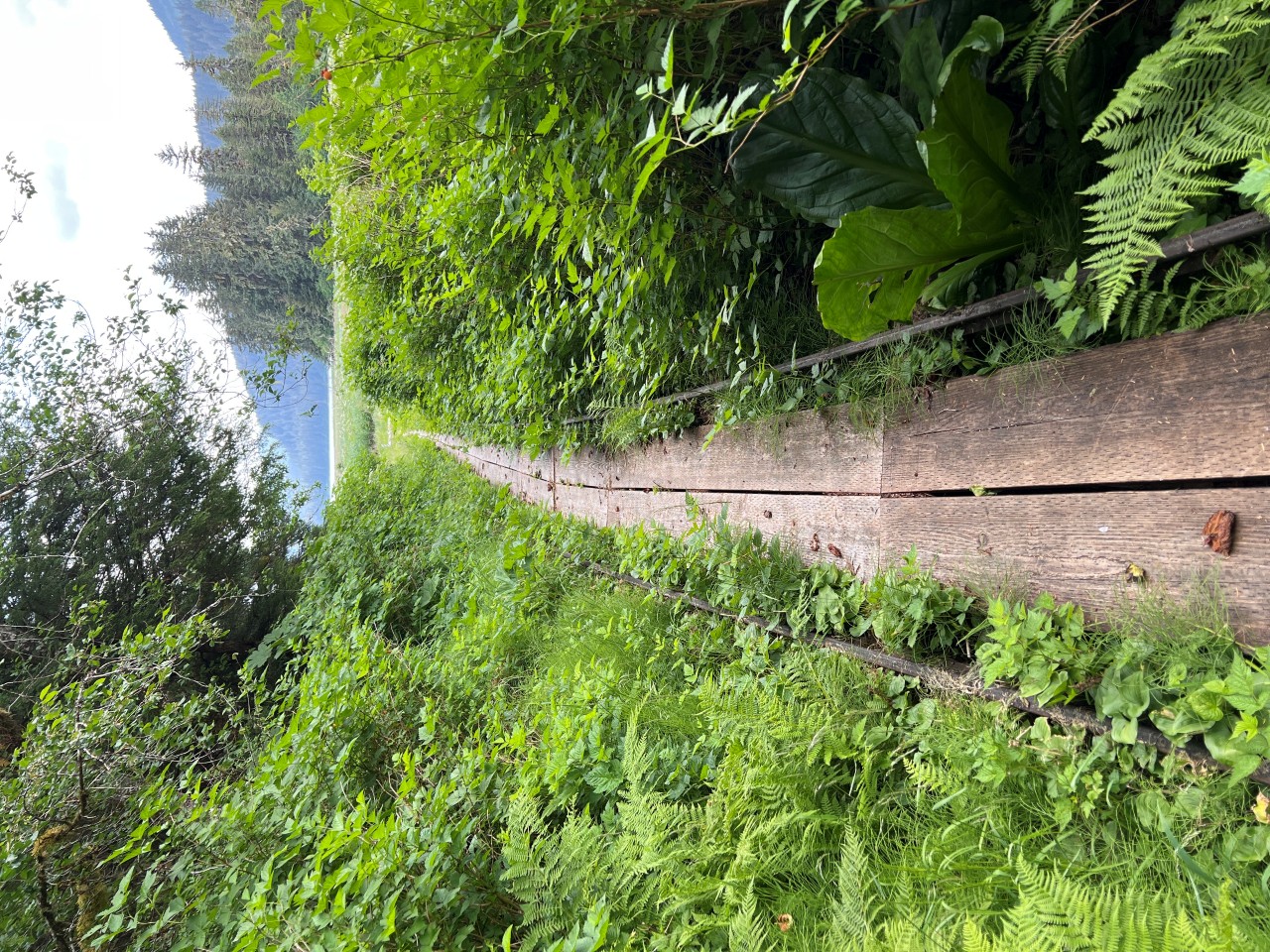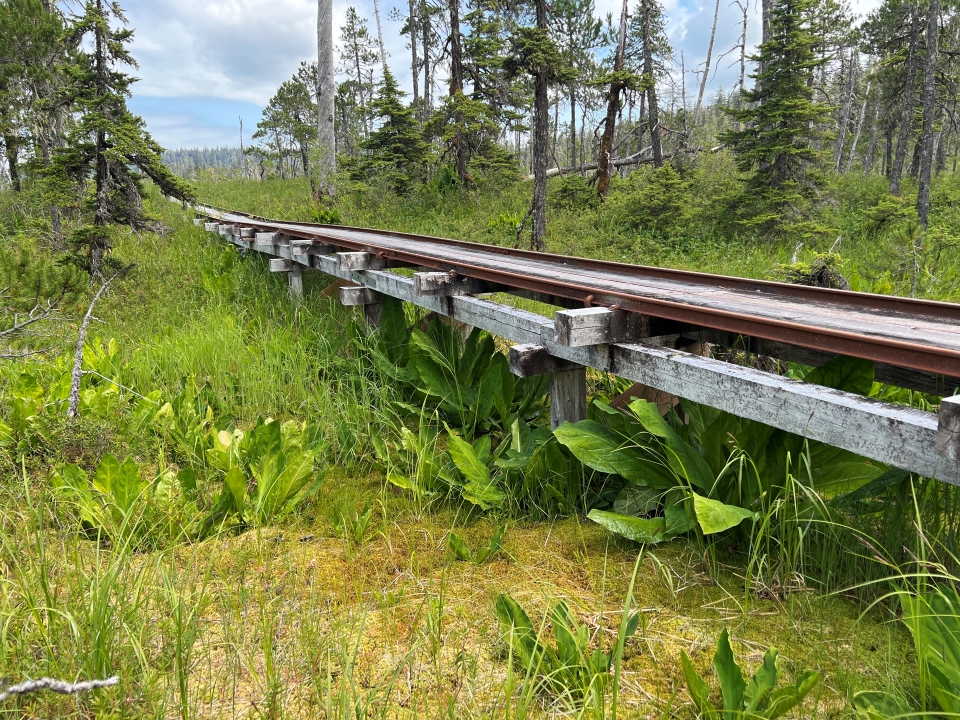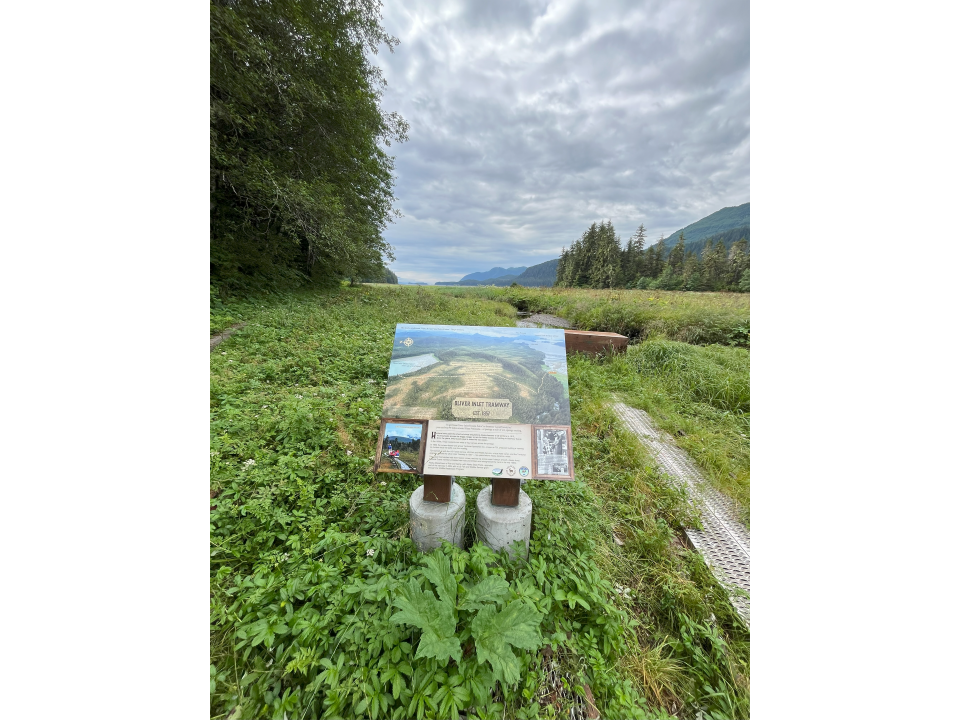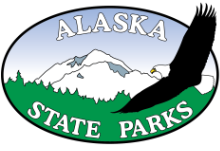Oliver Inlet Tramway

The History of the Oliver Inlet Tramway
The history of the Oliver Inlet Tramway is a story of citizens, a civic group, and state and federal government agencies pulling together to enhance recreation and hunting opportunities along northeastern Admiralty Island.
In 1945, when Alaska was still a U.S. territory, a group of hunters and fishermen in Southeast Alaska banded together to form Territorial Sportsmen Inc., commonly known as TSI. Many had served in the World War II-era Alaska Territorial Guard. Member Gil Eide said, "There was a crowd of us in the guard that drilled together, shot together, and were generally interested in doing some public good."
The Juneau-based nonprofit went on to influence state and national public policy on fishing and hunting access and conservation, as well as building public use cabins in the Juneau-Douglas area. To fund early Sportsmen’s projects, the idea was hatched of turning informal local fishing competitions into an organized event. TSI has held the Golden North Salmon Derby annually since 1947. In 2025, the civic organization reported that its derby had funded $2 million in scholarships to Southeast residents over the years.
TSI also spearheaded development of the Oliver Inlet Tramway on Admiralty Island.
Tucked between the island and its 50-mile-long Glass Peninsula is Seymour Canal, a long, relatively narrow water body known for its rich hunting opportunities. A skiff is key to accessing good hunting along the shallow canal, said TSI member Jack Manning.
To get your skiff to Seymour Canal from the Juneau-Douglas area, you could make the nearly 100-mile trip around Glass Peninsula... or portage about a mile of muskeg-y land from Oliver Inlet near the southern end of Douglas Island to Fool Inlet at the head of Seymour Canal.
In 1956, TSI partnered with the U.S. Forest Service (USFS), U.S. Fish and Wildlife Service (USFWS), local hotelier Johnathon Kennedy, and Territorial Engineer Irving Reed to build a tramway capable of hauling skiffs across the boggy portage, "opening hunting and fishing areas previously accessible only by footpath."
The tramway opened in 1957.
Hunters had been doing something similar long before Alaska became a territory in 1912. The land is the traditional territory of Aak'w Kwáan and T'aakú Kwáan Tlingit. An explorer in the late 1880s observed that they had laid skids between Oliver Inlet, or Deishú Áak'w (little lake at trail's end), and Seymour Canal, or Kanak’aa (skinny), "for convenience in hauling their canoes."
Building & Maintaining the Tramway
For the Territorial Sportsmen-USFS-USFWS project, the Sportsmen bought narrow-gauge rails from the Alaska-Juneau Gold Mining Co., which had been active in Juneau since the Gold Rush days of the early 1900s. Small rail lines, or tramways, were common in the mines in the greater Juneau-Douglas area and were often repurposed for new projects. In this case, rails of similar gauges were laid over a foundation of yellow cedar that included five trestle bridges.
One end of the Oliver Inlet Tramway extended into the water, allowing skiffs to be winched up out of the water and then rolled along the rails in a handcart.
Years of constant use took a toll on the tramway, outpacing maintenance by TSI members. TSI, the Sierra Club, USFS, Alaska National Guard and local businesses sponsored a major renovation in the early 1980's, the Juneau Empire reported.
After the improvements, the tramway saw a surge in use. Within a few years, the Empire reported that the carts tended to derail while crossing the swampy terrain, "leaving tram users overheated mentally and physically."
In 1984, the Empire reported that one user wrote in the yellow USFS logbook at the Oliver Inlet end, "We tugged and pulled and kicked and cussed the tram from one end to the other. Using it was certainly a unique Alaskan experience." Another wrote, "The wheels fell off the ----- tram. You have to be a real glutton for punishment to use it."
The National Guard gets called in
Revamping the tramway was deemed a great project for a new program to give the Alaska National Guard engineering battalions field experience by repairing park infrastructure, the Empire reported. In summer of 1985, the guard's air wing in Juneau flew more than 80 helicopter staging flights, setting ties and track along the route.
The crew on the ground was about 15 soldiers at a time, many from communities in the area, including Angoon, Kake, Juneau, and Haines, recalled Duff Mitchell nearly 20 years later. Mitchell, then a 24-year-old engineer officer, was the field commander who managed the project.
The muskeg was fine for walking on, but when the crew spent time working in one place, piercing the surface, it no longer held, said Mitchell.
"There were some deep spots," Mitchell said, and one Guardsman who sank into the soggy terrain had to be pulled out with a rope.
"He was pretty terrified,"" Mitchell said. "We pulled, and he came, but his boots stayed."
The Guardsmen replaced the rails, leveled the track, reinforced it to keep it from shifting out of alignment, and made curves more gradual... except for a hairpin turn before the final descent.
An advisor from Skagway’s White Pass railway pronounced the angle of the turn ridiculous, Mitchell said.
"We asked if we could go outside the easement" to widen the turn but were told no, recalled Mitchell.
The crew pounded an old rail into the ground and bent the rail for the corner around it.
"We had to heat the metal," Mitchell said, calling the stretch the "hardest part of the project."
Despite the plethora of bears in the area, Mitchell said in the three or four months they were there, they never had a bad bear incident.
A bear regularly visited the temporary shelter where the group kept their tools.
Now and then the bear would defecate in it "just to let us know we were in his territory," Mitchell recalled. "We would laugh that our tool shed became his port-a-potty."
Oliver Inlet State Marine Park
The state established Oliver Inlet State Marine Park in 1983. Its 560 acres encompass the tramway, a public use cabin on the Seymour Canal side, and much of Seymour Canal.
After the 1985 remodel, the Alaska Department of Natural Resources, Division of Parks and Outdoor Recreation (Alaska State Parks) took over management of the tram location.
In 2021, TSI, in partnership with Alaska State Parks, had local metal fabricators build a new aluminum cart. The rebuild included adding grease bearings, said TSI member Jack Manning, so hunters trying to be quiet wouldn’t be pushing a cart with squeaky wheels.
In 2024, the Alaska State Parks' Design and Construction section repaired 500 feet of the tramway in collaboration with the Alaska Department of Fish and Game (ADF&G.) as a hunter access project.
At the Seymour Canal end of the tram, Design and Construction replaced the original yellow cedar wooden walking surface with aluminum grating that will minimize snow buildup, and built a terminal at the end of the tram. The terminal is a 4'-square wooden block of 8"x8" treated lumber that gives boaters a place to stage gear as well as being a solid stop for the tramway’s cart.
To offset the loss of the historic integrity of this section of the tramway, as aluminum grating was not historically used, ADF&G commissioned an interpretive panel to share the tramway’s historic roots with visitors.
ADF&G Hunter Access Program funded the project as a pass-through grant from the USFWS Wildlife Restoration Program, also known as the Pittman-Robertson Act of 1937. Program funds come from federal excise taxes generated by the sale of firearms, ammunition, and archery equipment and are used to support public access to wildlife resources and hunter access.
For more information, see the Territorial Sportsmen website and the Alaska State Library's entry on the Golden North Salmon Derby, including images in the Gil Eide Photograph Collection, 1965-1973.
NOTE: Many of the individuals in the photographs are unidentified. If you recognize yourself or others, please let the library know at asl.historical@alaska.gov, or 907-465-2925. Also, if you have a good fish story to tell, they would love to hear it.


